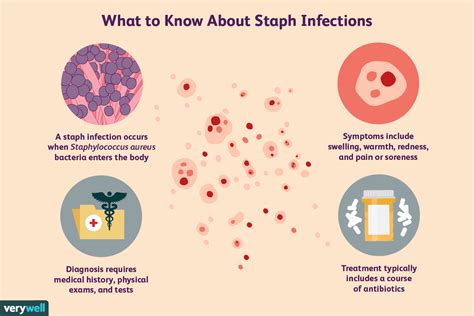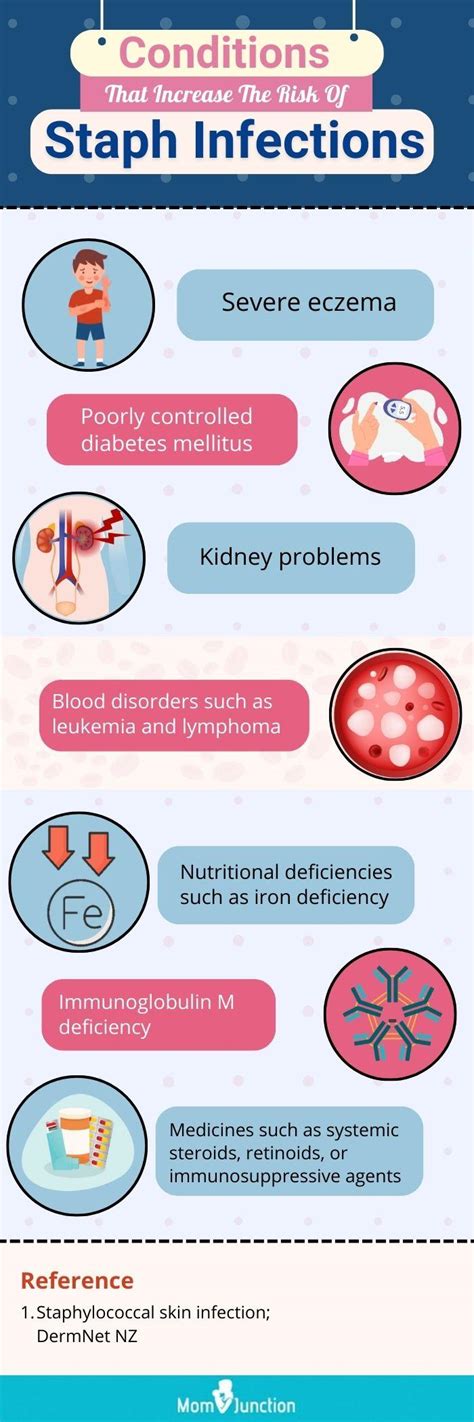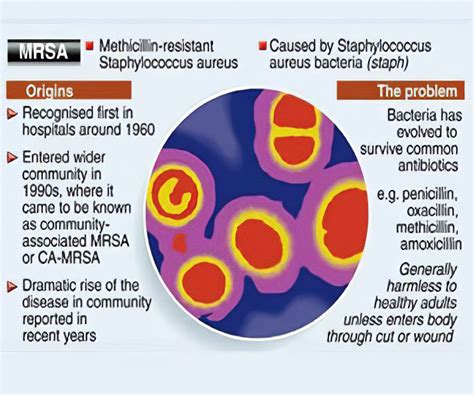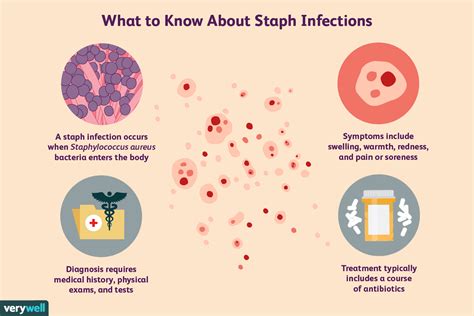Intro
Discover 5 common ways staph infections occur, including skin contact, contaminated food, and poor hygiene, highlighting the importance of prevention and treatment of staph bacteria, MRSA, and other related infections.
Staph infections, caused by the Staphylococcus bacteria, are a common type of infection that can affect various parts of the body. These infections can range from mild to severe and are often spread through skin-to-skin contact, contaminated food, or unclean surfaces. Understanding how staph infections occur is crucial in preventing their spread and mitigating their impact. Staph infections are a significant concern due to their potential to cause severe illnesses, such as sepsis, pneumonia, and meningitis, especially in people with weakened immune systems.
The bacteria that cause staph infections are ubiquitous and can be found on the skin and in the noses of healthy individuals. However, when the bacteria enter the body through a cut or scratch, they can cause an infection. Staph infections can also be spread through contaminated food, especially dairy products and meats, if they are not handled and cooked properly. Furthermore, staph bacteria can survive on surfaces for extended periods, making it possible for people to come into contact with them and become infected.
Staph infections are a significant public health concern, and it is essential to understand the various ways they can occur to prevent their spread. By recognizing the risk factors and taking preventive measures, individuals can reduce their likelihood of contracting a staph infection. This includes practicing good hygiene, such as washing hands regularly, especially after using the bathroom and before handling food. Additionally, avoiding close contact with people who have staph infections and keeping wounds clean and covered can help prevent the spread of these infections.
Introduction to Staph Infections

Causes of Staph Infections
Staph infections can be caused by a variety of factors, including skin-to-skin contact with an infected person, contaminated food, and unclean surfaces. The bacteria can enter the body through a cut or scratch, and can also be spread through the air when an infected person coughs or sneezes. In addition, staph bacteria can be found on surfaces, such as door handles, light switches, and countertops, making it possible for people to come into contact with them and become infected.Ways Staph Infections Occur

Risk Factors for Staph Infections
Certain individuals are at a higher risk of developing staph infections, including: * People with weakened immune systems, such as those with HIV/AIDS or undergoing chemotherapy * People with chronic medical conditions, such as diabetes or lung disease * People who have undergone surgery or have open wounds * People who use intravenous drugs or have a history of injection drug use * People who live in close quarters, such as in dormitories or military barracksPrevention of Staph Infections

Treatment of Staph Infections
Treatment for staph infections depends on the severity and location of the infection. Mild staph infections can be treated with antibiotics, while more severe infections may require hospitalization and intravenous antibiotics. In some cases, surgery may be necessary to drain abscesses or repair damaged tissue.Complications of Staph Infections

Long-term Effects of Staph Infections
Staph infections can have long-term effects on the body, including: * Scarring and disfigurement from skin infections * Permanent damage to organs, such as the lungs or heart * Increased risk of future infections * Weakened immune system * Emotional and psychological traumaCurrent Research on Staph Infections

Future Directions for Staph Infection Prevention
Future directions for staph infection prevention include: * Developing more effective prevention strategies, such as vaccines and antibiotics * Improving public awareness and education about staph infections * Enhancing infection control practices in healthcare settings * Developing new technologies to quickly and accurately diagnose staph infectionsConclusion and Final Thoughts

We invite you to share your thoughts and experiences with staph infections in the comments below. Have you or someone you know been affected by a staph infection? What steps do you take to prevent the spread of staph infections? Share this article with others to help raise awareness about the importance of staph infection prevention.
What are the symptoms of a staph infection?
+The symptoms of a staph infection can vary depending on the location and severity of the infection. Common symptoms include redness, swelling, and pain at the site of the infection, as well as fever and chills.
How are staph infections treated?
+Treatment for staph infections depends on the severity and location of the infection. Mild staph infections can be treated with antibiotics, while more severe infections may require hospitalization and intravenous antibiotics.
Can staph infections be prevented?
+Yes, staph infections can be prevented by practicing good hygiene, such as washing hands regularly and keeping wounds clean and covered. Avoiding close contact with people who have staph infections and avoiding sharing personal items can also help prevent the spread of staph infections.
